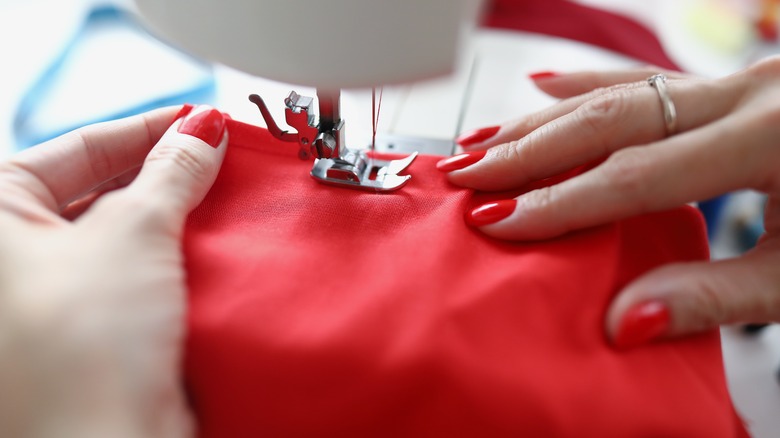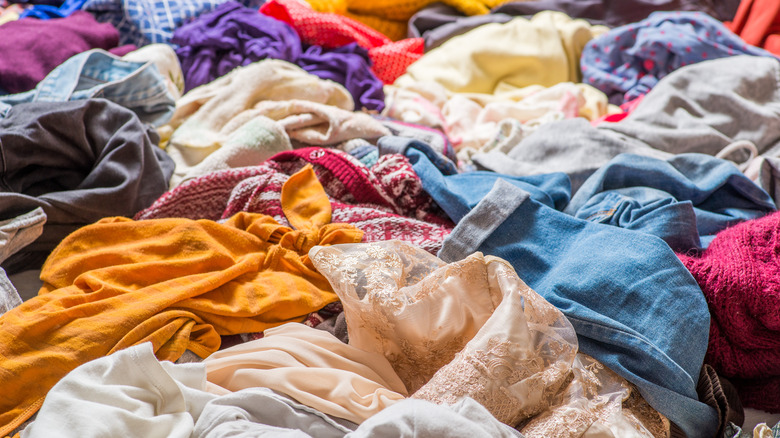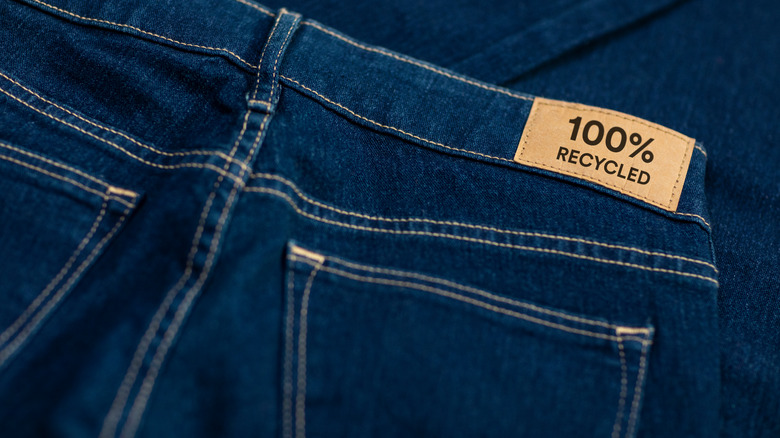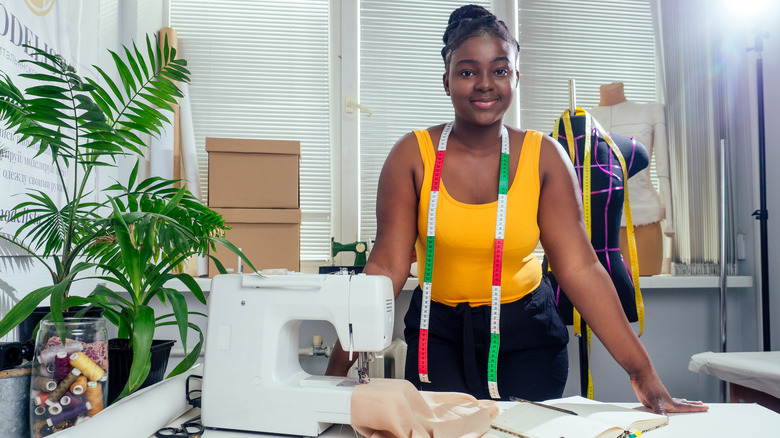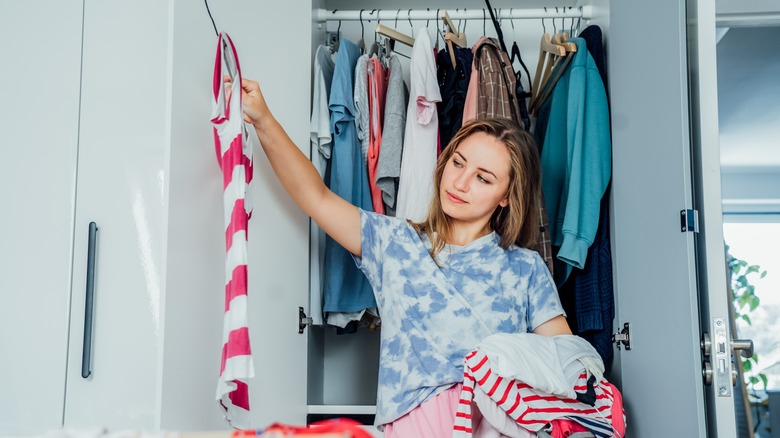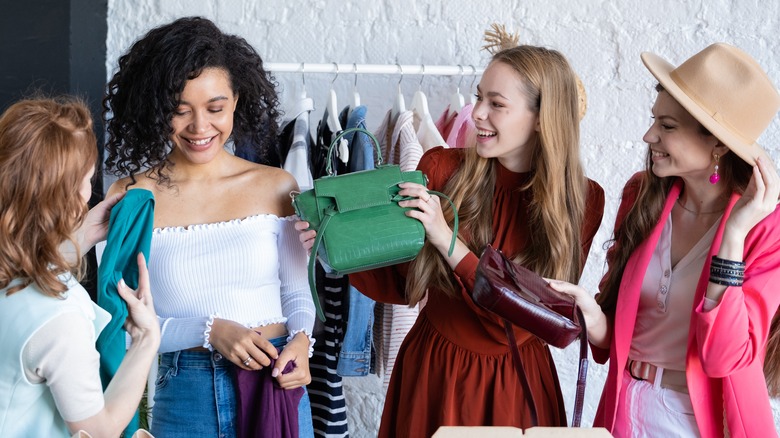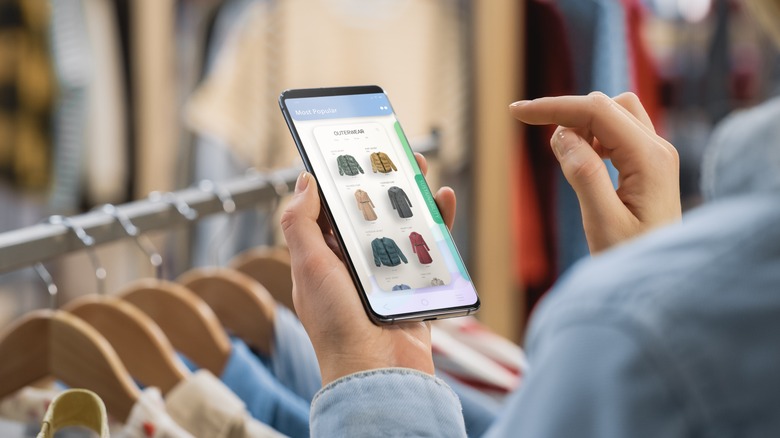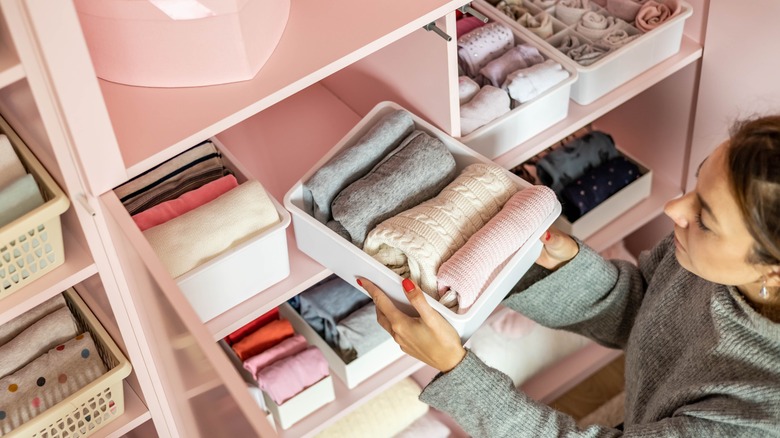What Is Circular Fashion, And How Can You Take Part?
The term circular fashion is thought to date back to 2014, with Good On You claiming it first originated in Sweden. It came about a year after a major tragedy struck the fashion industry, which shed serious light on the poor conditions of those making cheap garments for fast-fashion brands. The circular fashion movement was partly spurred by the collapse of a fast-fashion manufacturing complex in Bangladesh, which tragically killed over 1,000 workers. Afterward, people all over the world were left truly questioning the ethics of the clothing industry, perhaps more than ever before.
Not only that, but according to the EPA, a staggering 11.3 million tons of textiles ended up going to landfills in 2018. And that's just from the U.S. alone. But how on earth can we combat all that waste and destruction to the environment? Enter circular fashion, which the Ellen MacArthur Foundation predicted could grow from just 3.5% of the global fashion market to an impressive 23% by 2030.
But what the heck even is circular fashion, and how can we do more to support it? This is what you need to know about the movement trying to make a permanent change to the clothing industry.
What exactly is circular fashion?
Circular fashion refers to fashion items that work on a circular model instead of a linear one. Traditionally, fashion (and fast fashion, in particular) has worked under a linear model. That means fashion producers source material (sometimes unethically), make a product (usually while using a lot of water and emitting lots of carbon dioxide), and then sell it (for a major profit). After that, we consumers wear it for a while before discarding it, whereby it gets thrown into landfills. That process is then repeated time and time again, which is why so many of the world's landfills are full of old, nonbiodegradable clothing.
With circular fashion, the idea is that the products don't get cast off once they've been used once, and are instead used again. That can happen in a number of different ways, from items being completely recycled to modified and upcycled. Circular fashion describes the idea that the start and end of linear production can join together, which means there's never an end to the clothing's lifecycle. Usually in these cases, the products are made with more care from the very beginning, with companies creating products out of recyclable supplies or better quality materials so that they can be repeatedly and successfully re-used.
How a circular fashion economy differs from a recyclable fashion economy
Though they may seem like the same thing on the surface, a circular fashion economy does differ slightly from a recyclable or sustainable fashion economy. While a recyclable fashion economy is certainly better than the traditional fast-fashion linear production, a lot of the time it can only delay the inevitability of an item ending up in landfill. In many cases, the product may be recycled or upcycled once, and then go on to a landfill after that — when waste may be an even bigger issue than it is today. Likewise, in a lot of cases, we may think we're doing the right thing by donating our unwanted clothing to charities and other countries, but that can often just cause more problems. Not only can it price out local garment makers, but the items may just end up in landfill in another country anyway because they are so poorly made.
Circular fashion, rather, strives to make smarter decisions from the start to ensure clothing never ends up in a landfill. Items are made from biodegradable and/or easily recyclable materials from the very start (often without things that can't be recycled, like metal hardware) rather than relying on recycling and upscaling to give life to clothes that probably were never made to last for a long time.
Is it all really as good as it sounds?
We don't want to be biased here, but in many ways, yes, circular fashion is as good as it seems! Sustainable fashion has many benefits. According to the Ellen MacArthur Foundation, and putting all the ethical factors aside for a second (though we'll get to them shortly) there's over $560 billion that could be made from this shift. The outlet claimed that changing things up in this way not only has countless moral and ethical advantages, but also creates new jobs as companies make new business models and collaborations.
But, of course, the biggest advantages are the effects circular fashion has on the planet. As we already know, it's just not sustainable to keep sending clothing to landfill and then sourcing new material. Not to mention that the current method of clothing production needs countless gallons of water — it was reported in 2021 that the fashion industry uses around 93 billion cubic meters of water every single year. Yes. Billion. Plus, in 2023, it was claimed by UNECE that the fashion industry was responsible for around 10% of global carbon emissions annually. Therefore, any effort to better the fashion industry can't possibly be a bad thing, as we also try to rescue the planet from the destructive path we're on.
Do your research when you buy to support circular fashion
There are many ways you can support circular fashion, but, as with many things, the absolute best way is to make sure you're fully informed. Educate yourself on the brands that are doing more to use circular fashion morals and which ones aren't. There is a range of places you can go to check how green a company really is without having to put in too much legwork, too!
Using Cradle to Cradle is one of the easiest ways to check up on a company you're thinking of buying from, as it offers independent certifications that are given out in accordance with how well businesses are doing in closing the linear production model.
Cradle to Cradle looks for attempts to use renewable energy, the company's material health, carbon management, and efforts in cutting down on water consumption. Another great resource is Kearney's Circular Fashion Index. This website gives companies a rating based on their efforts, highlighting those that are really turning things around to protect the planet. Amongst some of the big-name brands who got shout-outs in 2022? Patagonia, The North Face, and Levi Strauss. Likewsie, Good On You has its very own directory that also gives out ratings, while letting consumers search directly to find out where exactly each company is making strides.
Don't purge your wardrobe right away
It might seem like one of the best ways to support the circular fashion movement would be to purge your wardrobe right away and get rid of anything that may be from a fast-fashion brand so that you can practice what you preach. But stop! One of the best ways to throw your support behind the movement is actually to hold on to your older garments for as long as you can and see if you can get more wear out of them. You could even upcycle what's already in your wardrobe (maybe turn those old jeans into denim shorts by cutting off the extra material and changing the color with natural dyes?) Then you could donate any leftover material to a textile store or use that to create something like a denim purse.
But if you just don't have the space to hold on to things or aren't thrifty enough to solo upcycle, there are ways you can get rid of your old garments without tossing them in the trash. Find out if there's anyone you could donate your discarded item to (try searching on sites like Etsy), or ask if they could create something custom for you. That way, you'll probably be supporting a small business too!
You could also gather your friends for a swap party so each of you can get something new without throwing anything away, or find a local recycling scheme to donate your items to.
Talking about circular fashion is the best way to get the word out there
As they say, be the change you want to see in the world — and make sure you talk about it too. The only way we're going to be able to turn everyone onto the circular fashion movement and better care for our planet is if everyone around the world knows what's available to them. So, if you find a great recycling program, tell your friends about it. If you want to host a swap party, invite as many people as you can. If you learned a shocking fact about the fashion industry's carbon footprint (hey, there's a couple right here in this article!) post it online for everyone to see. The more people who know why we have to make these changes, the more likely brands are to adopt a circular fashion approach to production.
Getting the word out there also feeds into the idea that money is power. If we all simply stopped buying new garments from companies who aren't yet doing their bit to push the fashion industry closer to a circular economy, there will be more pressure for them to do more. After all, there's a whole lot of power in money and numbers.
Renting is a major asset to circular fashion
One of the most in and sustainable things you can do right now is rent. This helps the circular fashion movement in two ways. Not only can you rent a new outfit to wear for that next big event, but you can also put up your own clothes for other people to rent, too. Plenty of businesses are now giving people the opportunity to wear clothing (including everything from cheaper pieces to luxury designer dresses) just once for a fraction of the cost of buying it outright.
That means (as long as you're conscious of the impact of shipping it to your home) you can step out in something new every time you step out — without the huge impact on the earth. Rent The Runway is one of the biggest brands offering gorgeous pieces for you to wear, while big companies better known for traditional fashion selling, like Selfridges, have also been getting in on the action.
If you're looking to help the earth by putting your clothes out there, sites like By Rotation give you the chance to put the pieces you don't wear anymore (or even those you do!) online for other people to rent and send back to you. Not only will you be helping the circular fashion movement by doing this, but you'll make a little cash too.
Take more care when it comes to your clothes
We know, we know. Sometimes we see that $5 top in the store and we can't help but bag ourselves a bargain — even if we don't actually need it. But to truly support the circular fashion movement, it's important that you make fundamental changes to your shopping habits at every stage of the game. First, when you're shopping, think about how much you actually need the item you're thinking of buying. Even if it's from one of the most sustainable brands in the world, it's still better for the planet for you to not buy something you don't actually need. Second, if you decide you really do have to have the item, try your best to get a version of it that's been recycled or purchase it from a second-hand shop (and remember there's always the chance to rent).
Next comes a biggie we probably don't think about too much. Taking proper care of your clothes. Once you've bought an item, try your best to wash it in the way the instructions suggest (hey, we've all washed something the wrong way to save time), then hang it in your wardrobe or fold it carefully in your drawer. Equally, if it tears, sew it back up as soon as possible before any holes or stitching issues get worse. By really caring for the things we already have, we eliminate the need to keep replacing them, creating unnecessary waste.
